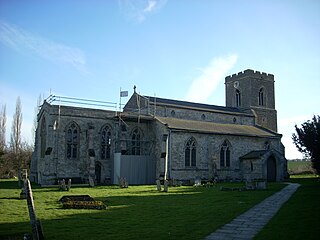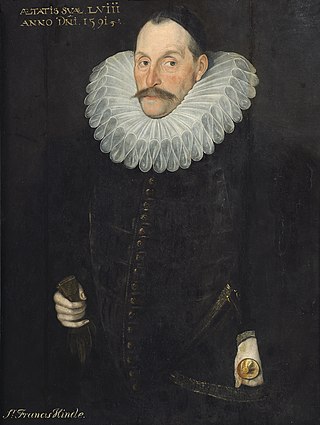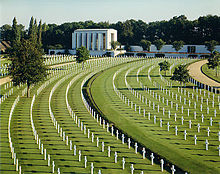
Cambridgeshire is a ceremonial county in the East of England and East Anglia. It is bordered by Lincolnshire to the north, Norfolk to the north-east, Suffolk to the east, Essex and Hertfordshire to the south, and Bedfordshire and Northamptonshire to the west. The largest settlement is the city of Peterborough, and the city of Cambridge is the county town.

Coton is a small village and civil parish about three miles west of Cambridge in Cambridgeshire, England and about the same distance east of the Prime Meridian. It is in the district of South Cambridgeshire. The parish covers an area of 392 hectares. In the 2001 census it had a population of 773, with approximately 336 dwellings and 322 households. The population at the 2011 census was 910.

The Abingtons are a community in South Cambridgeshire consisting of two small villages: Little Abington and Great Abington, about 7 miles (11 km) south east of Cambridge.
Sawston is a large village in Cambridgeshire in England, situated on the River Cam about seven miles (11 km) south of Cambridge. It has a population of 7,260.

Great Shelford is a village located approximately 4 miles (6.4 km) to the south of Cambridge, in Cambridgeshire, in eastern England. In 1850 Great Shelford parish contained 1,900 acres (7.7 km2) bisected by the River Cam. The population in 1841 was 803 people. By 2001, this had grown to 3,949 and by the Census 2011 to 4,233. It was described as Britain's twenty-second richest village in 2011.

Girton is a village and civil parish of about 1,600 households, and 4,500 people, in Cambridgeshire, England. It lies about 2 miles (3 km) to the northwest of Cambridge, and is the home of Girton College, a constituent college of the University of Cambridge.

Babraham is a village and civil parish in the South Cambridgeshire district of Cambridgeshire, England, about 6 miles (9.7 km) south-east of Cambridge on the A1307 road.
Histon is a village and civil parish in the South Cambridgeshire district, in the county of Cambridgeshire, England. It is immediately north of Cambridge – and is separated from the city – by the A14 road which runs east–west. In 2011, the parish had a population of 4,655. Histon forms part of the Cambridge built-up area.

Burrough Green is a village and parish in Cambridgeshire, England. The population of the village at the 2011 census was 378. The soil is various; subsoil, clay and chalk. The chief crops are wheat, barley and roots. The area of the parish is 2,272 acres (919 ha); the population in 1921 was 334."

Dry Drayton is a village and civil parish about 5 miles (8 km) northwest of Cambridge in Cambridgeshire, England, listed as Draitone in the Domesday Book in 1086. It covers an area of 829 hectares.

Cambridge American Cemetery and Memorial is a World War II American military war grave cemetery, located between the villages of Coton and Madingley, 7 km (4.3 mi) north-west of Cambridge, England. The cemetery, dedicated in 1956, contains 3,811 American war dead and covers 30.5 acres (12.3 ha). Cambridge American Cemetery is one of 26 overseas military cemeteries administered by the American Battle Monuments Commission (ABMC).

Trumpington is a village to the south of Cambridge, in the Cambridge district, in the county of Cambridgeshire, England. The village is an electoral ward of the City of Cambridge and a ward of South Cambridgeshire District Council. The 2011 Census recorded the ward's population as 8,034.

Sir St Vincent Cotton, 6th Baronet was a British cavalry officer, sportsman, stagecoach driver and gambler, and the last of the Cotton baronets of Landwade.

Little Thetford is a small village in the civil parish of Thetford, 3 miles (5 km) south of Ely in Cambridgeshire, England, about 76 miles (122 km) by road from London. The village is built on a boulder clay island surrounded by flat fenland countryside, typical of settlements in this part of the East of England.

Madingley Road is a major arterial road linking central Cambridge, England with Junction 13 of the M11 motorway. It passes by West Cambridge, a major new site where some University of Cambridge departments are being relocated.

Hardwick is a village and civil parish in the county of Cambridgeshire, England with a large housing estate located about 6 miles (9.7 km) west of the city of Cambridge, England. The village lies immediately south of the A428 road between Cambridge and St Neots. It is about 4 miles (6.4 km) east of the newly developed town of Cambourne. The village is nearly on the Greenwich Meridian. The northern border of the village is St Neots Road, now largely bypassed by the A428, with no houses or property on the north side of the road. In the 2001 census, the population was 2,630 in 946 households, increasing to 2,670 in 1,017 households at the 2011 Census.

The University of Cambridge Institute of Continuing Education (ICE) is a department of the University of Cambridge dedicated to providing continuing education programmes which allow students to obtain University of Cambridge qualifications at undergraduate and postgraduate level. Its award-bearing programmes range from undergraduate certificates through to part-time master's degrees. ICE is the oldest continuing education department in the United Kingdom.

Landwade is a village and former civil parish, now in the parish of Exning, in the West Suffolk district, in the county of Suffolk, England. It is 4 miles north of Newmarket. It was one of the smallest parishes in the county, it is only 1 kilometre from north to south and at most 500m from east to west. In 1951 the parish had a population of 38.

Sir Francis Hynde, of Madingley, Cambridgeshire and Aldgate, London, was an English politician and landowner particularly associated with the development of Madingley Hall and its manorial estates.
Rosamond Harding was an English music scholar, writer, organologist, and instrument collector. Her book The Piano-forte: its History Traced to the Great Exhibition of 1851 became the standard work on the subject.






















